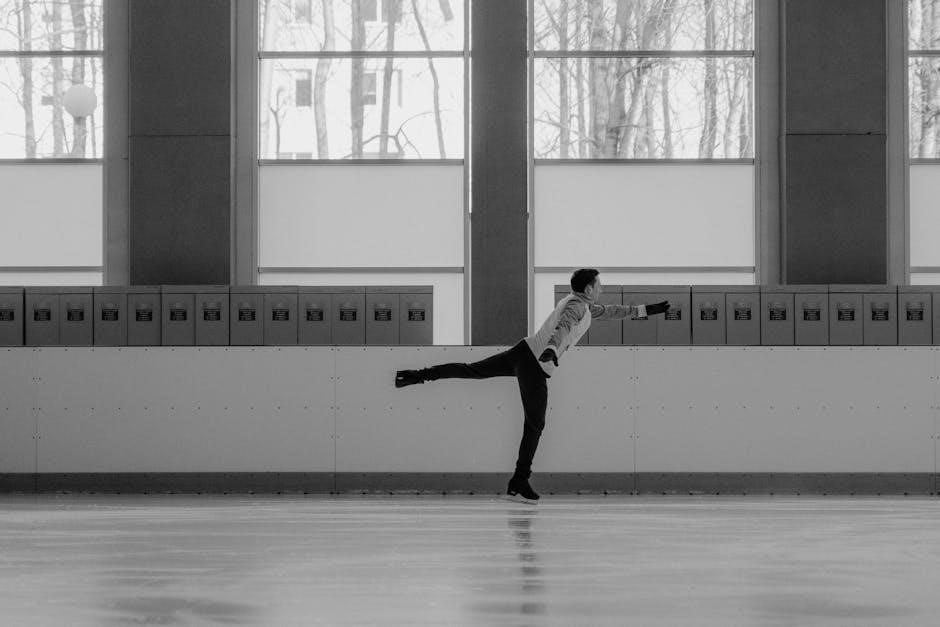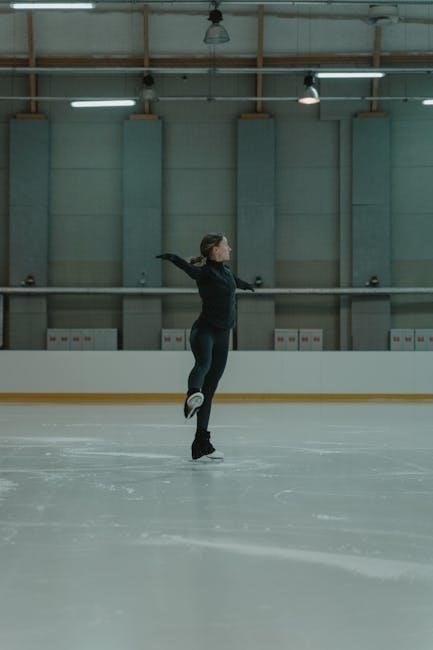Diastasis Recti is a condition where the abdominal muscles separate due to weakened connective tissue. It often occurs during pregnancy or intense physical activities. Exercises like Pelvic Floor Muscle Engagements and Gentle Core Strengthening can help manage and repair this condition, restoring core stability and improving posture. Proper guidance and gradual progression are essential for effective recovery.
1.1. What is Diastasis Recti?
Diastasis Recti is a condition characterized by the separation of the abdominal muscles, specifically the rectus abdominis, along the linea alba. This occurs when the connective tissue weakens, often due to pregnancy, heavy lifting, or intense exercise. It can lead to a visible bulge or gap between the abdominal muscles, affecting core strength and posture. While common in postpartum women, it can also occur in men and non-pregnant individuals. If left untreated, it may worsen over time, emphasizing the importance of targeted exercises and proper care to restore muscle integrity and functionality.
1.2. Causes and Risk Factors
Pregnancy is a primary cause of Diastasis Recti due to hormonal changes and abdominal expansion. Other risk factors include age, multiple pregnancies, and genetic predisposition. Overexertion during exercise or heavy lifting can also contribute, as excessive strain weakens the abdominal wall. Poor core strength and posture may exacerbate the condition. Understanding these causes helps in developing preventive strategies, such as modified exercises and proper body mechanics, to reduce the risk and manage symptoms effectively.
1.3. Importance of Exercises in Managing Diastasis Recti
Exercises play a crucial role in managing Diastasis Recti by strengthening the core and pelvic floor muscles. Targeted movements help close the abdominal gap, improve posture, and restore muscle function. Regular exercise enhances overall stability, reducing the risk of further separation. It also promotes healing by engaging the transversus abdominis, the deep abdominal muscle. Consistent practice can prevent worsening symptoms and support long-term recovery. While exercises are effective, severe cases may require professional guidance to ensure proper technique and avoid exacerbating the condition.

Understanding the Condition
Diastasis Recti is a separation of abdominal muscles, often due to pregnancy or strain. Symptoms include a visible bulge and weakened core. Self-assessment and professional diagnosis are key.
2.1. Symptoms of Diastasis Recti
Common symptoms of Diastasis Recti include a visible bulge or protrusion in the abdominal area, especially when coughing or straining. Weakness in the core and lower back pain are also typical. Some individuals may experience difficulty maintaining good posture or a sensation of instability in the abdominal region. In severe cases, it can affect pelvic floor function and overall physical stability. These symptoms often prompt individuals to seek targeted exercises and supportive measures to address the condition effectively.
2.2. How to Self-Assess for Diastasis Recti
To self-assess for Diastasis Recti, lie on your back with knees bent and feet flat. Place your fingers on your abdomen just above the belly button. Gently press inward and lift your head to check for a gap or bulge. Repeat the process both above and below the belly button. Measure the depth of the separation and observe if it widens when moving. If the gap is more than two fingers wide, consider seeking professional advice for proper diagnosis and guidance.
2.3. The Role of the Transversus Abdominis Muscle
The Transversus Abdominis (TVA) is the deepest abdominal muscle, playing a crucial role in core stability and posture. It acts as a natural girdle, wrapping around the spine and pelvis. Strengthening the TVA helps restore abdominal integrity and reduce the separation caused by Diastasis Recti. Engaging the TVA involves drawing the lower abdomen inward, a movement often used in exercises like Pelvic Tilts and Deep Abdominal Engagements. Proper activation of this muscle is essential for effective recovery, as it provides the necessary support to heal and close the gap between the abdominal muscles. Consistent practice enhances core strength and overall stability.

Preventing Diastasis Recti
Preventing Diastasis Recti involves gentle exercises, proper posture, and avoiding heavy lifting. Strengthening core muscles during pregnancy and postpartum can significantly reduce the risk of abdominal separation. Professional guidance is recommended for high-risk individuals to tailor prevention strategies effectively.
3.1. Exercises for Pregnant Women to Prevent Diastasis Recti
Gentle exercises during pregnancy can help prevent Diastasis Recti by strengthening core muscles. Pelvic Floor Muscle Engagements (Kegels) and Pelvic Tilt Exercises are highly recommended. Deep breathing exercises and modified planks also support abdominal stability. Maintaining good posture and avoiding heavy lifting are crucial. These exercises should be done under professional guidance to ensure safety and effectiveness. Strengthening the transversus abdominis muscle is key to preventing separation. Regular, gentle core work can reduce the risk of Diastasis Recti and support overall abdominal health during pregnancy.
3.2. Postpartum Care to Avoid Worsening the Condition
Postpartum care is critical to prevent Diastasis Recti from worsening. Avoid heavy lifting, bending, or activities that strain the abdomen. Use abdominal supports or compression garments to provide stability. Gentle exercises, such as Pelvic Floor Muscle Engagements and Deep Abdominal Muscle Engagements, can help strengthen core muscles. Ensure proper posture and avoid exercises that cause abdominal bulging. Monitoring progress and seeking professional guidance if symptoms persist is essential. Rest and recovery should be prioritized to allow the abdominal muscles to heal effectively.

Safe Exercises for Diastasis Recti
Safe exercises focus on strengthening core muscles without straining the abdomen. Pelvic Floor Muscle Exercises, Gentle Core Strengthening, and Pelvic Tilt Exercises are effective for improving stability and supporting healing.
4.1. Pelvic Floor Muscle Exercises (Kegels)
Pelvic Floor Muscle Exercises, also known as Kegels, are essential for strengthening the muscles that support the bladder, bowel, and uterus. To perform Kegels, tighten the muscles as if stopping the flow of urine, holding for 5-10 seconds before releasing. Start with 5 repetitions and gradually increase to 10, doing 1-2 sets daily. These exercises help improve core stability and reduce the separation of abdominal muscles caused by Diastasis Recti. Consistency is key, and they can be done in any position, making them a convenient and effective addition to your daily routine.
4.2. Gentle Core Strengthening Exercises
Gentle core strengthening exercises are vital for managing Diastasis Recti. Start by lying on your back or side with knees bent, placing one hand on your lower abdomen. Engage your transversus abdominis muscle by drawing your belly button toward your spine. Hold for 5-10 breaths, ensuring no bulging occurs. Progress to seated or standing positions as strength improves. Use abdominal supports like Tubigrip for added stability. These exercises help repair the separation by improving muscle engagement and core stability. Avoid movements that cause bulging or discomfort, focusing on slow, controlled actions to promote healing and strengthen the abdominal wall effectively.
4.3; Pelvic Tilt Exercises
Pelvic tilt exercises are an excellent way to gently strengthen the core and improve posture. Start by lying on your back with knees bent and feet flat on the floor. Place your hands on your lower abdomen for awareness. Inhale deeply, then exhale as you tilt your pelvis upward, flattening your lower back against the floor. Hold for 5 seconds, release, and repeat for 10-15 repetitions. This exercise helps stabilize the pelvis, reduce muscle strain, and promote proper abdominal engagement. Perform 2-3 sets daily, gradually increasing repetitions as strength improves. Wearing compression garments can provide additional support during these exercises.

Advanced Exercises for Recovery
Advanced exercises for recovery focus on deep abdominal muscle engagements and progressive core stability exercises to improve core strength and posture effectively.
5.1. Deep Abdominal Muscle Engagements
Deep abdominal muscle engagements target the transversus abdominis, the innermost abdominal muscle. These exercises help stabilize the core and promote healing of diastasis recti. Techniques include drawing the belly button toward the spine during movements like pelvic tilts or bird-dog exercises. Proper form is crucial to avoid putting strain on the abdominal wall. Many women find it helpful to use abdominal supports or compression garments during these exercises to provide additional stability. Consistency is key, as these exercises strengthen the deep core muscles over time, improving posture and reducing the separation. Progress gradually to more challenging exercises as strength improves.
5.2. Progressive Exercises for Core Stability
Progressive exercises for core stability are designed to gradually strengthen the abdominal muscles and improve posture; These exercises build on deep abdominal engagements, incorporating movements like bird-dog and modified planks. They aim to enhance muscle endurance and coordination, reducing the risk of further separation. Gentle resistance can be added using bands or light weights. It’s essential to focus on controlled movements and avoid any exercises that cause bulging or discomfort. Over time, these exercises help restore functional strength, making daily activities easier and reducing the appearance of diastasis recti. Always use abdominal supports if needed for added stability during progression.

Exercises to Avoid
Avoid heavy lifting, bending, or exercises that cause abdominal bulging. Stop any movement that causes pain or discomfort. Seek professional advice if unsure about safe exercises.
6.1. Strenuous Activities That Can Worsen Diastasis Recti
Heavy lifting, intense bending, and high-impact exercises can strain the abdominal muscles, worsening diastasis recti. Activities like crunches, planks, or excessive stretching should be avoided. Any exercise causing abdominal bulging or discomfort should be stopped immediately. Avoid movements that put pressure on the midline of the abdomen, as this can further weaken the connective tissue. It’s crucial to prioritize gentle, controlled exercises and seek professional guidance before starting any new routine to ensure safety and effectiveness in managing the condition.
6.2. Why Certain Exercises Should Be Avoided
Certain exercises should be avoided because they can put excessive strain on the abdominal wall, potentially worsening diastasis recti. Activities that involve heavy lifting, bending, or high-impact movements can cause the abdominal muscles to separate further. Additionally, exercises that require lying flat on the back or crunching movements can increase intra-abdominal pressure, straining the connective tissue. It’s important to choose low-impact, controlled exercises that strengthen the core without putting additional stress on the abdominal muscles. Consulting a healthcare professional or physical therapist can help identify safe and effective exercises tailored to individual needs.
Recovery and Support
Recovery from diastasis recti requires a combination of proper exercises, rest, and support. Compression garments and abdominal supports can help stabilize the core, promoting healing and reducing strain.
7.1. The Role of Compression Garments
Compression garments play a vital role in supporting abdominal muscles during recovery from diastasis recti. They provide external stability, helping to minimize strain and promote proper muscle engagement. By gently compressing the abdominal area, these garments can aid in reducing the separation of the rectus abdominis muscles. Additionally, they offer comfort and confidence, allowing individuals to perform daily activities and exercises with greater ease. Wearing compression garments can be particularly beneficial during physical activity, as they help maintain proper posture and reduce discomfort. This support is crucial for those undergoing postpartum recovery or managing mild to moderate cases of diastasis recti.
7.2. Using Abdominal Supports During Exercise
Abdominal supports, such as belts or wraps, can provide additional stability during exercise for individuals with diastasis recti. These supports help compress the abdominal muscles, reducing strain on the linea alba and promoting proper muscle engagement; They are particularly beneficial for those with moderate to severe separation, as they help minimize bulging and discomfort. By stabilizing the core, abdominal supports enable safer and more effective execution of exercises like pelvic tilts or deep abdominal engagements. This extra support can enhance confidence and reduce the risk of exacerbating the condition during physical activity.

Nutrition and Lifestyle
A balanced diet rich in protein, fiber, and vitamins supports core healing. Proper hydration and good posture reduce abdominal strain, aiding in diastasis recti management and overall well-being.
8.1. Dietary Tips to Support Core Healing
A nutrient-rich diet is crucial for healing diastasis recti. Focus on whole foods like leafy greens, lean proteins, and whole grains to support tissue repair. Incorporate foods high in omega-3 fatty acids, such as fish and flaxseeds, to reduce inflammation. Stay hydrated to maintain connective tissue elasticity. Avoid processed foods and sugary drinks that can hinder recovery. A balanced diet, combined with regular exercise, promotes stronger core muscles and improves overall abdominal health, aiding in the recovery process and preventing further separation. Consistency in dietary habits is key to achieving long-term results.
8.2. Importance of Posture in Managing Diastasis Recti
Maintaining proper posture is essential for managing diastasis recti. Good posture reduces strain on the abdominal muscles, preventing further separation. When sitting or standing, ensure your shoulders are back and pelvis is neutral. Avoid slouching, as it can weaken core muscles and worsen the condition. During exercises, focus on engaging your core to support your spine. Correct posture not only alleviates discomfort but also enhances the effectiveness of diastasis recti exercises. By incorporating postural awareness into daily activities, individuals can promote healing and improve overall core stability, making it a vital component of recovery.

Monitoring Progress
Regularly tracking improvements in core strength and abdominal separation is crucial. Self-assessments help identify progress, ensuring exercises are effective. Noticeable signs include reduced separation and better muscle engagement. Seek professional help if the gap persists or symptoms worsen, ensuring proper recovery and avoiding further complications.
9.1. Tracking improvements in Core Strength
Monitoring core strength progress is vital for effective Diastasis Recti management. Start by assessing muscle engagement and separation width. Use a measuring tape or visual cues to track changes. Notice improvements in posture and reduced bulging during exercises. Keep a journal to document progress, noting increases in exercise repetitions and intensity. Celebrate small achievements to stay motivated. Over time, consistent effort leads to stronger core muscles and better overall stability, enhancing both physical function and confidence.
9.2. When to Seek Professional Help
If symptoms persist or worsen despite consistent exercise, seek professional guidance. Consult a physiotherapist or healthcare provider if experiencing severe abdominal separation, pain, or limited core strength improvement. A professional can assess your condition and provide personalized recommendations. They may suggest advanced therapies or interventions to address underlying issues. Don’t hesitate to seek help if exercises aren’t yielding progress or if you notice significant gaps in muscle engagement. Early intervention ensures better outcomes and prevents further complications, promoting a safer and more effective recovery journey.
Consistent exercise strengthens core muscles, improving posture and overall well-being. Embrace the journey, stay committed, and celebrate your progress every day toward a healthier, stronger you.
10.1. Long-Term Benefits of Consistent Exercise
Consistent exercise for diastasis recti offers numerous long-term benefits, including improved core strength, better posture, and enhanced overall stability. Regular engagement of deep abdominal muscles, such as the transversus abdominis, helps restore the abdominal wall integrity. Over time, this can reduce the separation of the rectus abdominis muscles, leading to a flatter stomach and reduced discomfort. Additionally, strengthened pelvic floor muscles contribute to better bladder control and improved sexual health. These exercises also promote a healthier posture, reducing the risk of back pain and improving daily activities. With patience and dedication, the results of consistent exercise can be transformative and lasting.
10.2. Encouragement for Continuing the Journey
Embracing the journey of managing diastasis recti requires patience and persistence. Celebrate small victories, like improved posture or increased core strength, to stay motivated. Remember, progress may be slow, but consistency yields lasting results. Surround yourself with supportive communities or professionals who understand your journey. Setting realistic goals and acknowledging efforts, no matter how small, fosters resilience. Every exercise and healthy choice brings you closer to healing and confidence. Stay committed, as the long-term benefits of a stronger core and improved well-being make every step worthwhile.